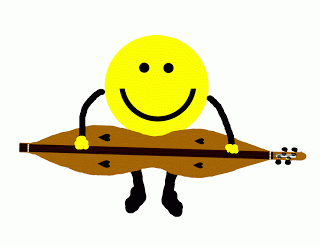levers on a dulcimer?
General mountain dulcimer or music discussions
I have to admit that although I started this thread, I was probably ill equipped to do so since I don't build instruments and really don't even have the vocabulary to refer to parts of a harp accurately.
But you guys have been great in helping me think through this and even offering new and creative ideas.
David: I should have thought to just ask you about this stuff in the beginning. Those levers I saw on two small harps that basically just pushed on the strings to raise the pitch on the other side of a pin or something acting like a bridge might have been made by whoever made the harps. All those anyone else or I have found online seem to work like those you describe. I am now convinced those premade levers that reduce the VSL would not work on the dulcimer.
Bobby: I guess I did misunderstand you, and maybe that has to do with my limited understanding of modes. I had thought you imagined a lever (or maybe to) so that you could toggle back and forth between a DAd tuning and a DAC tuning. You could then play a medley of say "Red-Haired Boy" and "Gilderoy," which is basically the same tune but out of a minor mode without retuning.
Wout: I think you are right that nothing we could rig up would allow the pitch of a string to change as much as a fourth. But my original idea was not to replace tuning altogether but either to allow a momentary change in pitch to be a able to catch an accidentalor to allow a change from a D tuning to a C tuning. I play a lot in multi-instrument jams and out of a D tuning I can play in the key of G or use a capo to get the keys of G and A. But the other common key is C, and I have to retune all three strings for that. There isn't always time and I sometimes miss the first verse or so of the next song.
Skip, the whammy bar idea was just my way of thinking about how you might activate something to change the tuning of a string while you were playing. I imaged using the whammy not really to hear the bend, but to get from one extreme to another, with those extremes representing a 1/2 note or perhaps a whole note. I don't even know how much a normal whammy bar adjusts the pitch anyway. I was just trying to envisiona devise as simple to use as the button on chromatic harmonicas that shifts the pitch a half note.
Thanks again, everyone, for chiming in even if to help me realize what's not possible.



